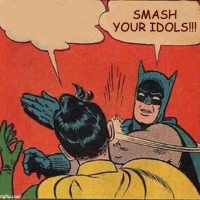DjangoBooks.com
Welcome to our Community!
Categories
- 20K All Categories
- 1.1K General
- 476 Welcome
- 59 Archtop Eddy's Corner
- 146 CD, DVD, and Concert Reviews
- 384 FAQ
- 26 Gypsy Jazz Italia
- 26 Photos
- 202 Gypsy Picking
- 21 Unaccompanied Django
- 15 Pearl Django Play-Along Vol.1
- 17 Gypsy Fire
- 45 Gypsy Rhythm
- 1.4K Gypsy Jazz University - Get Educated
- 130 Gypsy Jazz 101
- 224 Repertoire
- 218 History
- 707 Technique
- 51 Licks and Patterns
- 6 Daniel Givone Manouche Guitare Method Users Group
- 20 Eddie Lang Club
- 1.3K Gypsy Jazz Gear
- 800 Guitars, Strings, Picks, Amps, Pickups and Other Accessories
- 457 Classifieds
- 49 Recording
- 62 Other Instruments
- 18 Violin
- 5 Mandolin
- 22 Accordion
- 7 Bass
- 10 Woodwinds
- 346 Gypsy Jazz Events
- 142 North America
- 109 Europe
- 95 International
Who's Online (0)
Gonzalo Bergara's Open Patterns Book
 djazzy
New Riccardo Mordeglia, AJL
djazzy
New Riccardo Mordeglia, AJL
Anybody have any experience with this book? Recommended? Details?
thanks in advance.









Comments
There is a review: https://azsamadlessons.com/book-review-the-open-patterns-book-by-gonzalo-bergara/
I came across one of these videos. Didn't realize it's part of his new book.
Here's Gonzalo's reply to a question on one of the videos, I think that's as detailed as you're gonna get:
I purchased this and am going through it. What is the overall lesson with these open patterns?
Roy, that's a very good question, initially the idea was to brake away from linear lines, so use bigger intervals and add a "different" sound to your improvisation. From there I realized that, at least for my own playing, they are great "warm up" exercises, they make a very clear map of triads and chord shapes, they are great exercises for your right hand learning how to jump to further away strings, they are very difficult exercises hence you become more technically proficient the more you learn, they are very difficult to make sound good, so they make you work on your tone and sound quite a bit. And lastly after playing these patterns for a long time your improvisation will incorporate this way of playing, without it having to be these same exact patterns, mixed with your linear way of improvising you should sound like a more complex and interesting soloist.
This has been my personal experience, sorry for the long answer. And thank you for your support.
Nice find @Buco, thanks!
I have my poor man's version of couple of those large intervals ways to phrase some stuff. It's a nice way to enrich the sound. It kinda fell of the radar recently, this is a good reminder.
Me too. Very basic. But they've really opened my ears the last year or so since toying with them. Such a strong contrast to my "linear" ways.
A great player and a friend, Koran Agan, told me his solution to problems like this is to compose a song that's using things that he wants to bring into his playing. That way it's going to be something he enjoys playing and he'll do it a lot. For example, he came up with this for these sort of large jumps, it's in the B section here